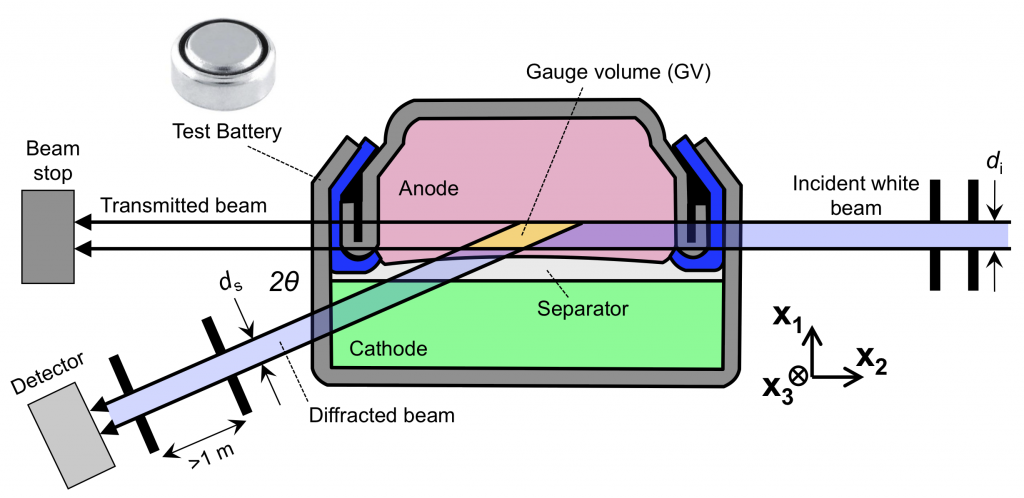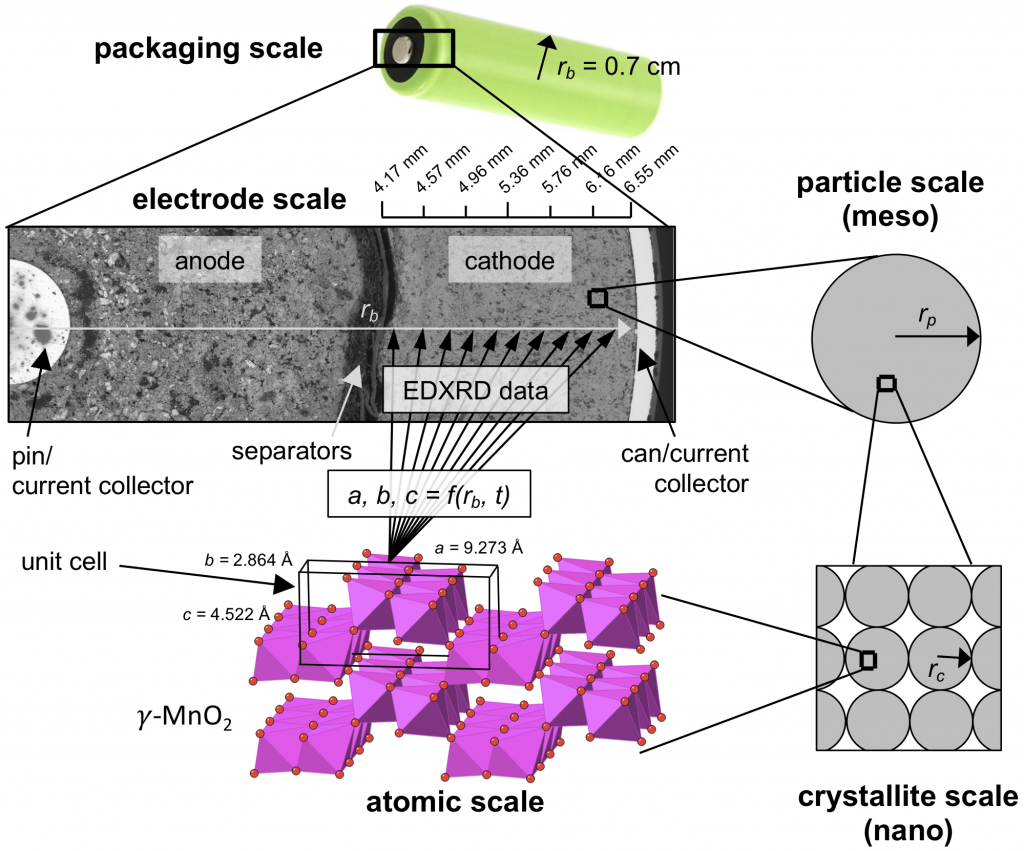
We have a new paper out, which is a review paper on using energy dispersive X-ray diffraction (EDXRD) for battery characterization. EDXRD had previously been used to get crystallography data from inside diamond anvil cells, and also from the bulk interior of engineering materials like turbine blades. Using it to look inside sealed batteries was a good idea. It wasn’t my idea, but I’m one of the battery people they found to try it. I have a passion for current distributions, and EDXRD is a wonderful way to directly observe current distributions.
The paper was written with Amy Marschilok and the Takeuchi group at Stony Brook, and also with Mark Croft at Rutgers. We’re still using EDXRD to watch complex mechanisms inside batteries (without the fear that opening the battery will change anything), but since the review paper spans 2012-2020, it was a good idea to catalog past work in one place. The new HEX beamline under development at NSLS-II will be the premier EDXRD resource sometime soon. The figure below is an attempt to explain what exactly EDXRD gets you (atomic scale information, as a function of the electrode scale) and why it’s important (look how thick that electrode is). If you ever want to talk about EDXRD drop me a line.


